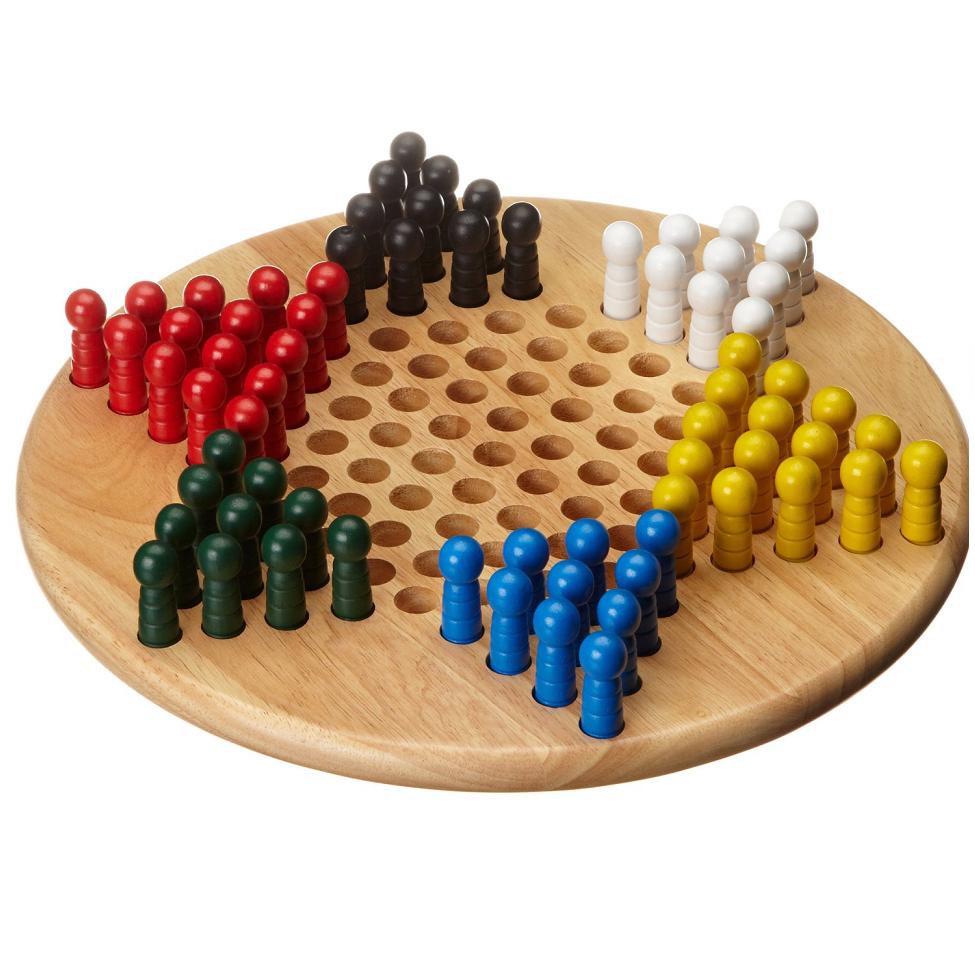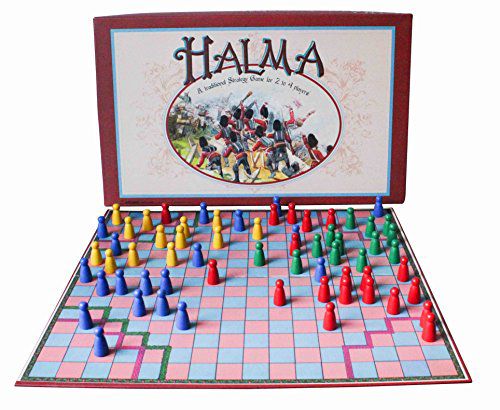


In a three-player game, 15 pieces are used by each player. When two play, each player has 19 pieces when four play, 13 pieces. Usually the game is played with either two or four players, but some rare, early versions of the game explain rules for three players. The pieces–four sets of different colors–are small, pawn-like pieces, usually wood, and the board is marked with a “camp” in each corner. Players try to establish a chain or ladder, consisting of their own and their opponents’ pieces, which might allow one piece to move from one corner of the board to the other. Pieces are moved by going into an adjacent, unoccupied space, as well as by jumping over pieces–your own or your opponents’–if there is a unoccupied space immediately beyond players are allowed consecutive jumps on the same turn, but a jump and a simple space-to-space move are not allowed together. The object of the game is for players, starting in the corners, to move their pieces across the board, ending up in their opponent’s starting positions. Two things make HALMA unique: 1) the number of pieces used at the start of the game depends on the number of players and 2) although players may move their pieces by jumping over opponents’ pieces, the jumped pieces are never captured nor removed from the board. HALMA is played on a flat square board with 256 spaces (16 x 16). since the Parker Brothers version in 1961.Ī more colorful than usual Halma gameboard, ca. But HALMA is still played throughout the world, though it has not been produced in the U.S. As a result of the conflict between Bradley and Horsman, Bradley released a revised rendition of HALMA in 1889, with the made-up name ECKHA, stating: “owing to the fact that certain parties claim to possess exclusive rights to the use of the word “Halma,” …(and) in order to avoid any controversy, we now designate that game by the new name of “Eckha.” ECKHA never became popular. According to Milton Bradley, “(Halma), while published by us, went to nearly every part of the civilized world….” Horsman, calling itself “The Halma Company,” claimed ownership as well. Horsman, produced the game into the early 20th century. Monks) in New England in 1885, another American company, E.I. Although Milton Bradley said it had acquired the strategy game from the original inventor (G.H. HALMA is the only internationally-recognized classic game from the 1800s known to have originated in the United States (though some books incorrectly report it was invented in England).


 0 kommentar(er)
0 kommentar(er)
